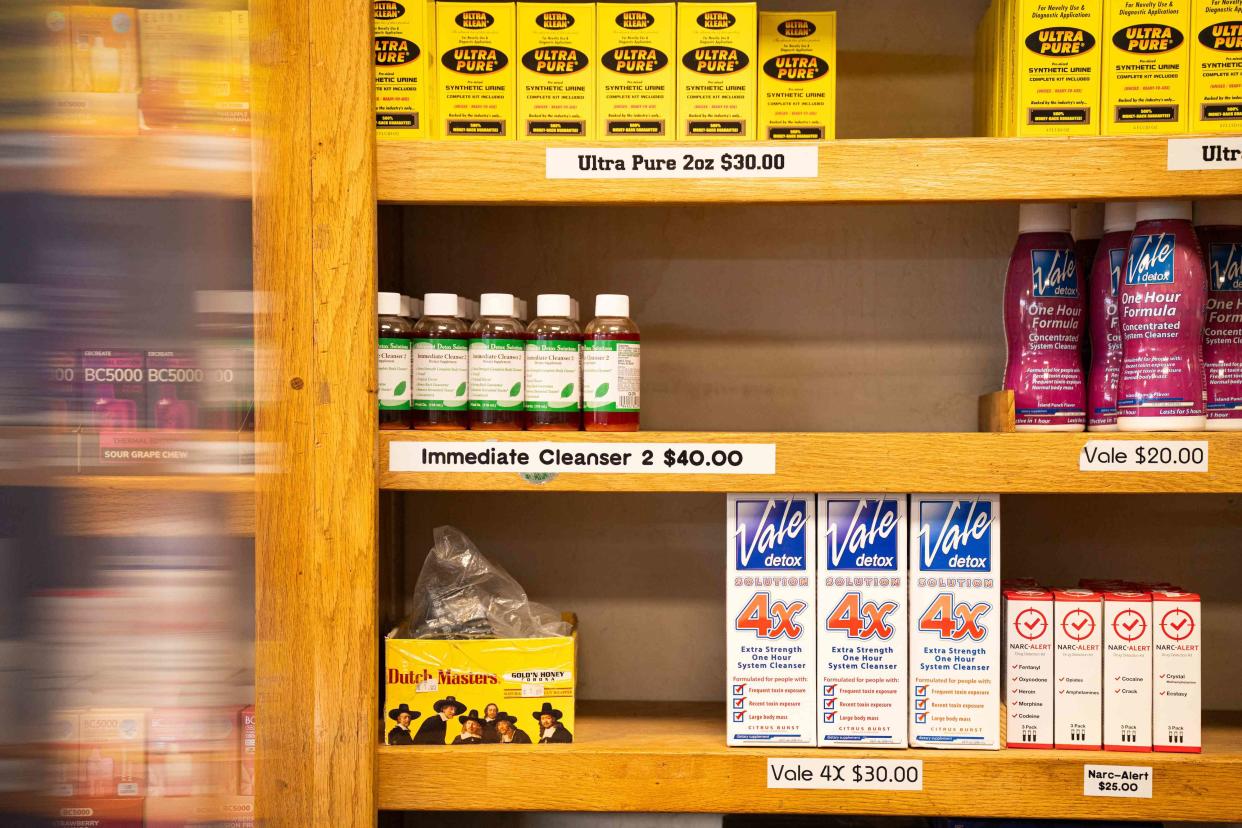Rise in Fentanyl-Laced Pills Underscores Need for Drug Testing, Harm Reduction

Bloomberg / Getty Images
Fact checked by Nick BlackmerFact checked by Nick Blackmer
Key Takeaways
Over 115 million illicit fentanyl pills were seized last year, marking a 2,300-fold increase since 2017.
Most fentanyl seizures occurred in the Western U.S., with significant increases in the Midwest.
Fentanyl-containing pills are often disguised as other medications, increasing overdose risks for those seeking prescription drugs from non-certified sources.
A new study shows that more than 115 million pills containing illicit fentanyl were seized by law enforcement last year—a 2,300-fold increase since 2017.
Aside from the dramatic increase in fentanyl seizures, researchers found that most of these seizures occurred in the West, but there was also a sizable increase in the Midwest.
The key concern about fentanyl in pill form is that it’s often disguised as other medications, according to Joseph Palamar, PhD, MPH, a co-author of the study and an associate professor of population health at NYU-Langone Health.
“I’ve been studying drug trends for over 20 years since I was a party person myself… I learned pretty quickly that people never know what they’re getting,” Palamar told Verywell.
Someone might get a fake pill that contains fentanyl when they’re purchasing what they think is Xanax or Adderall from places other than a certified pharmacy. Those who are seeking out prescription medications such as oxycodone or benzodiazepines are also at high risk.
Nora Volkow, MD, director of the National Institute on Drug Abuse, said that this research is vital when it comes to identifying the scale of the drug’s prevalence and who’s the most at risk.
“The volume of the seizures that are reported in this paper is so gigantic that you can see they must be overflowing the market. And when you look at the number of people that died from overdoses of fentanyl, then you come to realize that a lot of it is not being seized, that a lot of it is passed on undetected, and it’s making people vulnerable,” Volkow told Verywell.
Related: Emojis Are the New Language of Drug Deals—Especially for Teens
What the Data Tells Us About Opioid Usage Trends
One of the challenges with drug usage trends data is that it becomes outdated quickly. Despite the surge in fentanyl availability, overdose deaths declined slightly last year, especially from synthetic opioids like fentanyl and tramadol, according to the recent data released by the Centers for Disease Control and Prevention.
Palamar said fentanyl poisonings are often underreported, and surveys don’t typically include certain populations, such as those facing homelessness.
“It just keeps shifting,” Palamar said. “Every time you think nothing could get worse than this, a month later, you hear about a new trend.”
Daliah Heller, PhD, MPH, the vice president of drug use initiatives at public health nonprofit Vital Strategies, said law enforcement data can help with prevention and treatment efforts, but it has its limits.
“We never know whether we’re looking at a sample that is actually representative of what’s happening in the drug supply, or whether it’s simply an artifact of more effective law enforcement activity and efforts to seize or interdict drug markets,” Heller told Verywell.
Related: Philadelphia Communities Are Promoting Overdose Prevention Tools
Preventing Fentanyl Overdose
Experts say a multitude of approaches is required to tackle the volume of fentanyl that is circulating in the U.S. drug supply.
Many states have expanded harm reduction efforts, such as opening safe injection sites and offering free Narcan (naloxone), a nasal spray that can quickly reverse an opioid overdose.
Heller said that teaching people how to use Narcan and making fentanyl test strips more accessible is also key.
“Another version of drug checking is FTIR [Fourier Transform InfraRed spectroscopy] machines in community locations, and even mobilizing labs to do mass spectrometry analysis of drug residue to understand what’s in the drug supply, and then getting that information rapidly back out to the community,” Heller said.
Palamar added that while harm reduction efforts are highly valuable, prevention needs to be a bigger part of the puzzle.
“With all the harm reduction focus and no talk about prevention, I call it death reduction at this point,” he said, adding that health authorities should also dedicate more resources to education efforts and treatment for opioid use disorder.
Read Next: Could a Fentanyl Vaccine Fight the Overdose Epidemic?
What This Means For You
The alarming rise in fentanyl availability highlights the importance of obtaining prescription medications from legitimate pharmacies. Stay informed about harm reduction tools like Narcan and fentanyl test strips to protect yourself and others from potential overdose or fentanyl poisoning.
Read the original article on Verywell Health.

